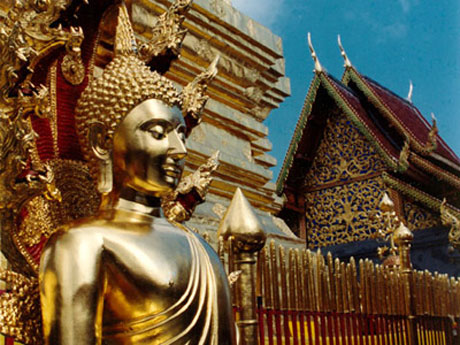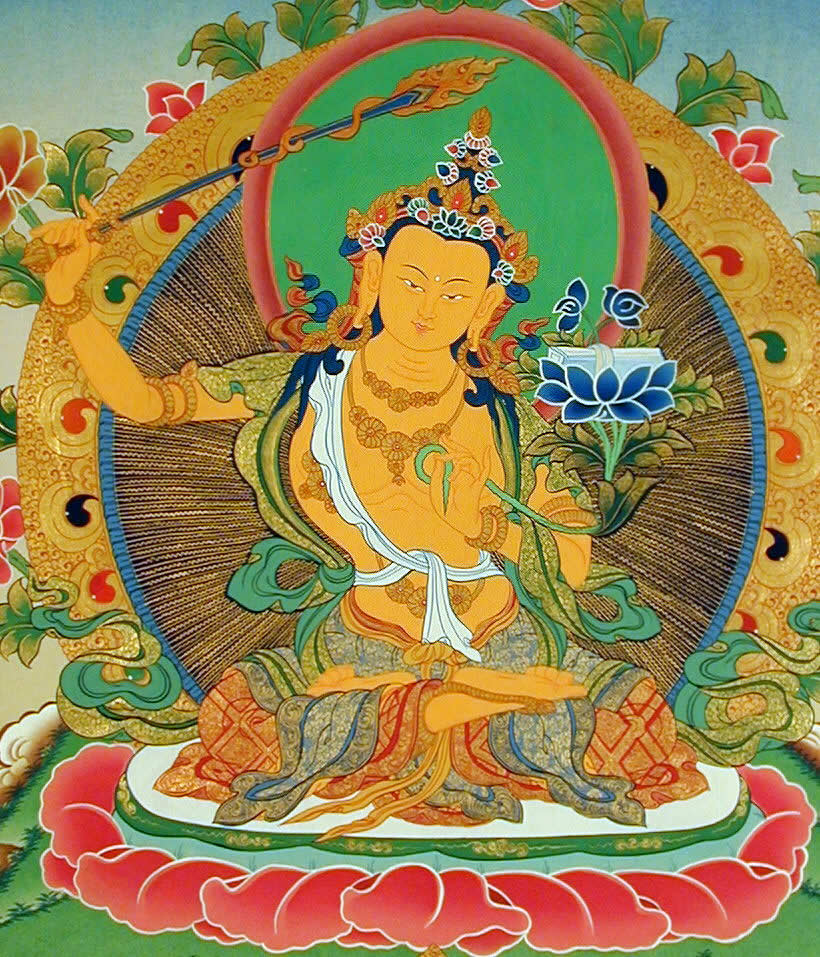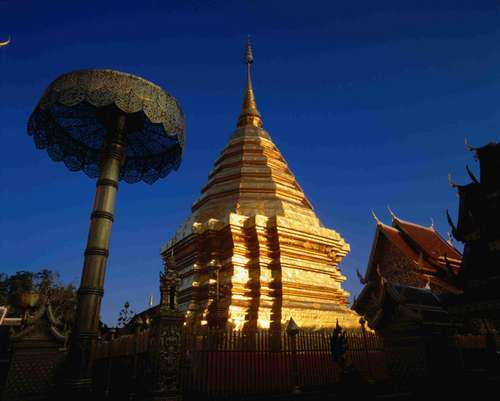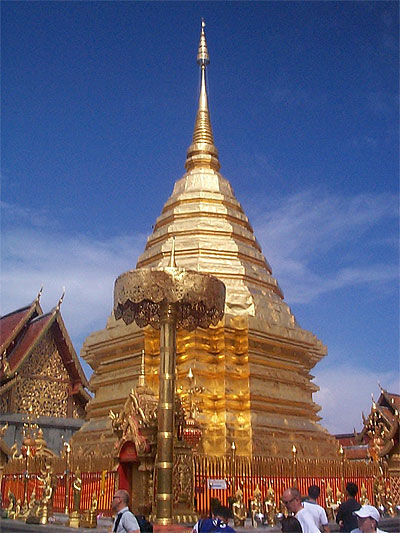



LESSON 35 DHAMMA NIBBANA PART VI The The Thirty one Planes of Existence
20 09 2010 FREE ONLINE eNālandā Research and Practice UNIVERSITY
- Neither my life of luxury in the palace nor my life as an ascetic in the forest is the way to freedom.-Buddha Quote
EDUCATE (BUDDHA)! MEDITATE (DHAMMA)! ORGANISE (SANGHA)!
WISDOM IS POWER
Awakened One Shows the Path to Attain Ultimate Bliss
Anyone Can Attain Ultimate Bliss Just Visit:
COMPUTER IS AN ENTERTAINMENT INSTRUMENT!
INTERNET!
IS
ENTERTAINMENT NET!
TO BE MOST APPROPRIATE!
Using such an instrument
The Free e-Nālandā Research and Practice University has been re-organized to function through the following Schools of Learning :
Buddha’s Sangha Practiced His Dhamma Free of cost, hence the Free- e-Nālandā Research and Practice University follows suit
As the Original Nālandā University did not offer any Degree, so also the Free e-Nālandā Research and Practice University.
The teachings of Buddha are eternal, but even then Buddha did not proclaim them to be infallible. The religion of Buddha has the capacity to change according to times, a quality which no other religion can claim to have…Now what is the basis of Buddhism? If you study carefully, you will see that Buddhism is based on reason. There is an element of flexibility inherent in it, which is not found in any other religion.
§ Bhimrao Ramji Ambedkar , Indian scholar, philosopher and architect of Constitution of India, in his writing and speeches
I.
KAMMA
REBIRTH
AWAKEN-NESS
BUDDHA
THUS COME ONE
DHAMMA
II.
ARHAT
FOUR HOLY TRUTHS
EIGHTFOLD PATH
TWELVEFOLD CONDITIONED ARISING
BODHISATTVA
PARAMITA
SIX PARAMITAS
III.
SIX SPIRITUAL POWERS
SIX PATHS OF REBIRTH
TEN DHARMA REALMS
FIVE SKANDHAS
EIGHTEEN REALMS
FIVE MORAL PRECEPTS
IV.
MEDITATION
MINDFULNESS
FOUR APPLICATIONS OF MINDFULNESS
LOTUS POSTURE
SAMADHI
CHAN SCHOOL
FOUR JHANAS
FOUR FORMLESS REALMS
V.
FIVE TYPES OF BUDDHIST STUDY AND PRACTICE
MAHAYANA AND HINAYANA COMPARED
PURE LAND
BUDDHA RECITATION
EIGHT CONSCIOUSNESSES
ONE HUNDRED DHARMAS
EMPTINESS
VI.
DEMON
LINEAGE
with
Level I: Introduction to Buddhism
Level II: Buddhist Studies
TO ATTAIN
Level III: Stream-Enterer
Level IV: Once - Returner
Level V: Non-Returner
Level VI: Arhat
Jambudvipa, i.e, PraBuddha Bharath scientific thought in
mathematics,
astronomy,
alchemy,
and
anatomy
Philosophy and Comparative Religions;
Historical Studies;
International Relations and Peace Studies;
Business Management in relation to Public Policy and Development Studies;
Languages and Literature;
and Ecology and Environmental Studies
Welcome to the Free Online e-Nālandā Research and Practice University
Course Programs:
DHAMMA
NIBBANA PART VI – The Thirty-one Planes of Existence
· The Thirty-one Planes of Existence
The inescapable law of kamma guarantees that each and every one of our actions — whether it be of body, speech, or mind — has consequences in line with the skillfulness or unskillfulness of that action. We can often witness this process first-hand in our own lives, even if the effects may not be immediately apparent. But the Buddha also taught that our actions have effects that extend far beyond our present life, determining the quality of rebirth we can expect after death: act in wholesome, skillful ways and you are destined for a favorable rebirth; act in unwholesome, unskillful ways and an unpleasant rebirth awaits. Thus we coast for aeons through samsara, propelled from one birth to the next by the quality of our choices and our actions.
The suttas describe thirty-one distinct “planes” or “realms” of existence into which beings can be reborn during this long wandering through samsara. These range from the extraordinarily dark, grim, and painful hell realms all the way up to the most sublime, refined, and exquisitely blissful heaven realms. Existence in every realm is impermanent; in Buddhist cosmology there is no eternal heaven or hell. Beings are born into a particular realm according to both their past kamma and their kamma at the moment of death. When the kammic force that propelled them to that realm is finally exhausted, they pass away, taking rebirth once again elsewhere according to their kamma. And so the wearisome cycle continues.
The realms of existence are customarily divided into three distinct “worlds” (loka), listed here in descending order of refinement:
· The Immaterial World (arupa-loka). Consists of four realms that are accessible to those who pass away while meditating in the formless jhanas.
· The Fine-Material World (rupa-loka). Consists of sixteen realms whose inhabitants (thedevas) experience extremely refined degrees of mental pleasure. These realms are accessible to those who have attained at least some level of jhana and who have thereby managed to (temporarily) suppress hatred and ill-will. They are said to possess extremely refined bodies of pure light. The highest of these realms, the Pure Abodes, are accessible only to those who have attained to “non-returning,” the third stage of Awakening. The Fine-Material World and the Immaterial World together constitute the“heavens” (sagga).
· The Sensuous World (kama-loka). Consists of eleven realms in which experience — both pleasurable and not — is dominated by the five senses. Seven of these realms are favorable destinations, and include our own human realm as well as several realms occupied by devas. The lowest realms are the four “bad” destinations, which include the animal and hell realms.
It is pointless to debate whether these realms are real or simply fanciful metaphors that describe the various mind-states we might experience in this lifetime. The real message of this cosmology is this: unless we take steps to break free of the iron grip of kamma, we are doomed to wander aimlessly from one state to another, with true peace and satisfaction forever out of reach. The Buddha’s revolutionary discovery came in finding that there is a way to break free: the Noble Eightfold Path, which equips us with precisely the tools we need to escape from this wearisome wandering, once and for all, to a true and unshakeable freedom.
The information on this page was assembled from a variety of sources. In the interests of economizing space I have not attributed each fact to its respective source.
I. The Immaterial World (arupa-loka)
|
Realm |
Comments |
Cause of rebirth here |
|
(31) Neither-perception-nor-non-perception(nevasaññanasaññayatanupaga deva) |
The inhabitants of these realms are possessed entirely of mind. Having no physical body, they are unable to hear Dhamma teachings. |
|
|
(30) Nothingness(akiñcaññayatanupaga deva) |
||
|
(29) Infinite Consciousness(viññanañcayatanupaga deva) |
||
|
(28) Infinite Space(akasanañcayatanupaga deva) |
II. The Fine-Material World (rupa-loka)
|
Realm |
Comments |
Cause of rebirth here |
|
(27) Peerless devas (akanittha deva) |
These are the five Pure Abodes(suddhavasa), which are accessible only to non-returners (anagami) andarahants. Beings who become non-returners in other planes are reborn here, where they attain arahantship. Among its inhabitants is Brahma Sahampati, who begs the Buddha to teach Dhamma to the world (SN 6.1). |
Fourth jhana. (See, e.g., AN 4.123.) |
|
(26) Clear-sighted devas (sudassi deva) |
||
|
(25) Beautiful devas (sudassa deva) |
||
|
(24) Untroubled devas (atappa deva) |
||
|
(23) Devas not Falling Away (aviha deva) |
||
|
(22) Unconscious beings(asaññasatta) |
Only body is present; no mind. |
|
|
(21) Very Fruitful devas (vehapphala deva) |
Beings in these planes enjoy varying degrees of jhanic bliss. |
|
|
(20) Devas of Refulgent Glory(subhakinna deva) |
Third jhana(highest degree). (See, e.g., AN 4.123.) |
|
|
(19) Devas of Unbounded Glory(appamanasubha deva) |
Third jhana(medium degree) |
|
|
(18) Devas of Limited Glory(parittasubha deva) |
Third jhana (minor degree) |
|
|
(17) Devas of Streaming Radiance(abhassara deva) |
Second jhana(highest degree). (See, e.g., AN 4.123.) |
|
|
(16) Devas of Unbounded Radiance(appamanabha deva) |
Second jhana(medium degree) |
|
|
(15) Devas of Limited Radiance(parittabha deva) |
Second jhana(minor degree) |
|
|
(14) Great Brahmas (Maha brahma) |
One of this realm’s most famous inhabitants is the Great Brahma, a deity whose delusion leads him to regard himself as the all-powerful, all-seeing creator of the universe (DN 11). |
First jhana(highest degree) |
|
(13) Ministers of Brahma (brahma-purohita deva) |
Beings in these planes enjoy varying degrees of jhanic bliss. |
First jhana(medium degree) |
|
(12) Retinue of Brahma (brahma-parisajja deva) |
First jhana (minor degree). (See, e.g., AN 4.123.) |
III. The Sensuous World (kama-loka)
HAPPY DESTINATIONS (SUGATI)
|
Realm |
Comments |
Cause of rebirth here |
|
(11) Devas Wielding Power over the Creation of Others (paranimmita-vasavatti deva) |
These devas enjoy sense pleasures created by others for them. Mara, the personification of delusion and desire, lives here. |
· Ten wholesome actions (MN 41) |
|
(10) Devas Delighting in Creation(nimmanarati deva) |
These devas delight in the sense objects of their own creation. |
|
|
(9) Contented devas (tusita deva) |
A realm of pure delight and gaiety. Bodhisattas abide here prior to their final human birth. This is where the bodhisatta Maitreya (Metteya), the next Buddha, is said to dwell. |
|
|
(8) Yama devas (yama deva) |
These devas live in the air, free of all difficulties. |
|
|
(7) The Thirty-three Gods (tavatimsa deva) |
Sakka, a devotee of the Buddha, presides over this realm. Many devas dwelling here live in mansions in the air. |
|
|
(6) Devas of the Four Great Kings(catumaharajika deva) |
Home of the gandhabbas, the celestial musicians, and the yakkhas, tree spirits of varying degrees of ethical purity. The latter are analogous to the goblins, trolls, and fairies of Western fairy tales. |
|
|
(5) Human beings (manussa loka) |
You are here (for now). Rebirth as a human being is extraordinarily rare (SN 56.48). It is also extraordinarily precious, as its unique balance of pleasure and pain (SN 35.135) facilitates the development of virtue and wisdom to the degree necessary to set one free from the entire cycle of rebirths. |
· The development of virtue andwisdom (AN 10.177) · The attainment of stream-entry(sotapatti)guarantees that all future rebirths will be in the human or higher realms. |
< ?xml:namespace prefix = v ns = “urn:schemas-microsoft-com:vml” />
STATES OF DEPRIVATION (APAYA)
|
Realm |
Comments |
Cause of rebirth here |
|
(4) Asuras (asura) |
The demons — “titans” — that dwell here are engaged in relentless conflict with each other. |
· Ten unwholesome actions (MN 10) |
|
(3) Hungry Shades/Ghosts(peta loka) |
Ghosts and unhappy spirits wander hopelessly about this realm, searching in vain for sensual fulfillment. |
· Ten unwholesome actions (MN 10) · Lack of virtue, holding to wrong views (AN 10.177) |
|
(2) Animals(tiracchana yoni) |
This realm includes all the non-human forms of life that are visible to us under ordinary circumstances: animals, insects, fish, birds, worms, etc. |
· Ten unwholesome actions (MN 10) · Lack of virtue, holding to wrong views. If one is generous to monks and nuns, however, one may be reborn as an “ornamented” animal (i.e., a bird with bright plumage; a horse with attractive markings, etc.;AN 10.177). · Behaving like an animal (MN 57) |
|
(1) Hell (niraya) |
These are realms of unimaginable suffering and anguish (described in graphic detail in MN 129 and 130). Should not be confused with theeternal hell proposed by other religions, since one’s time here is — as it is in every realm — temporary. |
· Ten unwholesome actions (MN 10) · Lack of virtue, holding to wrong views (AN 10.177) · Murdering your parents, murdering an arahant, injuring the Buddha, or creating a schism in the Sangha (AN 5.129) · Being quarrelsome and annoying to others (Snp II.6) |
· Buddhist Dictionary, by Nyanatiloka Mahathera (Kandy: Buddhist Publication Society, 1980).
· The Buddhist Religion: A Historical Introduction (fourth edition), by R.H. Robinson & W.L. Johnson (Belmont, California: Wadsworth, 1997).
· The Long Discourses of the Buddha (Introduction), translated by Maurice Walshe (Boston: Wisdom Publications, 1987).
· A Manual of Abhidhamma, by Ven. Narada Thera (Kuala Lumpur: Buddhist Missionary Society, 1979).
· The Middle Length Discourses of the Buddha (Introduction), translated by Bhikkhu Ñanamoli and Bhikkhu Bodhi (Boston: Wisdom Publications, 1995).
· Teacher of the Devas (Wheel Publication 414/416), by Susan Elbaum Jootla (Kandy: Buddhist Publication Society, 1997).
· The Three Worlds (wall chart), compiled by Ven. Acaro Suvanno (printed for free distribution by devotees and Mr & Mrs Lim Say Hoe and family).
See also:
· Intentional Action (Kamma)
· Heavens (sagga)
· The Round of Rebirth (samsara)
·
· “Nibbana,” by Thanissaro Bhikkhu
· “A Verb for Nirvana,” by Thanissaro Bhikkhu
· “Nibbana” in the General Index
· Peace Quotes
· There can be no peace without law.
· Better than a thousand hollow words is one word that brings peace.
– Buddha (560-483 B.C.)
· Peace comes from within. Do not seek it without. - Buddha
· Whatever words we utter should be chosen with care for people will hear them and be influenced by them for good or ill. - Buddha
· Even death is not to be feared by one who has lived wisely. - Buddha
· Holding on to anger is like grasping a hot coal with the intent of throwing it at someone else; you are the one who gets burned. A good friend who points out mistakes and imperfections and rebukes evil is to be respected as if he reveals a secret of hidden treasure. – Buddha
· They are not following dhamma who resort to violence to achieve their purpose. But those who lead others through nonviolent means, knowing right and wrong, may be called guardians of the dhamma. Those who really seek the path to Awaken-ness.
· He who experiences the unity of life sees his own Self in all beings, and all beings in his own Self, and looks on everything with an impartial eye. – Buddha
· In a controversy the instant we feel anger we have already ceased striving for the truth, and have begun striving for ourselves. - Buddha
· Hatred does not cease by hatred, but only by love; this is the eternal rule. = Buddha
· You will not be punished for your anger, you will be punished by your anger. – Buddha
· A family is a place where minds come in contact with one another. If these minds love one another the home will be as beautiful as a flower garden. But if these minds get out of harmony with one another it is like a storm that plays havoc with the garden. - Buddha
· When one has the feeling of dislike for evil, when one feels tranquil, one finds pleasure in listening to good teachings; when one has these feelings and appreciates them, one is free of fear. - Buddha
· Whatsoever, after due examination and analysis, you find to be kind, conducive to the good, the benefit, the welfare of all beings…that doctrine believe and cling to, and take it as your guide. - Buddha
· Peace is the marriage of the people and the planet, with all attendant vows.
· Peace comes from being able to contribute the best that we have, and all that we are, toward creating a world that supports everyone. But it is also securing the space for others to contribute the best that they have and all that they are.
· There is no trust more sacred than the one the world holds with children. There is no duty more important than ensuring that their rights are respected, that their welfare is protected, that their lives are free from fear and want and that they grow up in peace.
· There is no time left for anything but to make peace work a dimension of our every waking activity.
· Democracy is an objective. Democratization is a process. Democratization serves the cause of peace because it offers the possibility of justice and of progressive change without force.
· Peace is the only battle worth waging.
· We know how to organize warfare, but do we know how to act when confronted with peace?
· Human Beings, indeed all sentient beings, have the right to pursue happiness and live in peace and freedom.
· If you want to make peace, you don’t talk to your friends. You talk to your enemies.
· Peace cannot be kept by force. It can only be achieved by understanding.
· I like to believe that people in the long run are going to do more to promote peace than our governments. Indeed, I think that people want peace so much that one of these days governments had better get out of the way and let them have it.
· It is possible to live in peace.
· We look forward to the time when the Power of Love will replace the Love of Power. Then will our world know the blessings of peace.
· Peace is every step.
· If we are peaceful, if we are happy, we can smile and blossom like a flower, and everyone in our family, our entire society, will benefit from our peace.
· Peace-making is a healing process and it begins with me, but it does not end there.
· Nothing is more precious than peace. Peace is the most basic starting point for the advancement of humankind.
· One day we must come to see that peace is not merely a distant goal that we seek, but that it is a means by which we arrive at that goal. We must pursue peaceful ends through peaceful means.
· If there is to be peace in the world,
· There must be peace in the nations.
·
· If there is to be peace in the nations,
· There must be peace in the cities.
·
· If there is to be peace in the cities,
· There must be peace between neighbors.
·
· If there is to be peace between neighbors,
· There must be peace in the home.
·
· If there is to be peace in the home,
· There must be peace in the heart.
· All we are saying is give peace a chance.
· Blessed are the peacemakers for they shall be called the children of God.
· There is no way to peace; peace is the way.
· This is the way of peace: overcome evil with good, and falsehood with truth, and hatred with love.
· Five enemies of peace inhabit us - avarice, ambition, envy, anger, and pride; if these were to be banished, we should infallibly enjoy perpetual peace.
· To reach peace, teach peace.
· If you want peace, work for justice.
· Peace will be victorious.
· Peace is not the product of terror or fear.
Peace is not the silence of cemeteries.
Peace is not the silent revolt of violent repression.
Peace is the generous, tranquil contribution
of all to the good of all.
Peace is dynamism. Peace is generosity.
It is right and it is duty.
· It isn’t enough to talk about peace. One must believe in it. And it isn’t enough to believe in it. One must work at it.
· The structure of world peace cannot be the work of one man or one party or one nation. It must be a peace which rests on the cooperative effort of the whole world.
· In the hearts of people today there is a deep longing for peace. When the true spirit of peace is thoroughly dominant, it becomes an inner experience with unlimited possibilities. Only when this really happens - when the spirit of peace awakens and takes possession of men’s hearts, can humanity be saved from perishing.
· Peace is always beautiful.
GOOD GOVERNANCE·
There can be no peace without law
